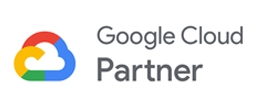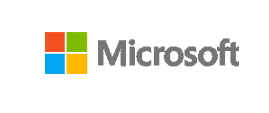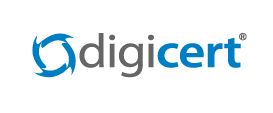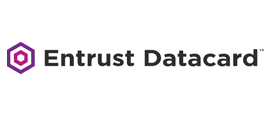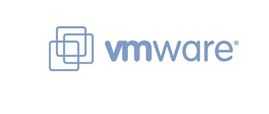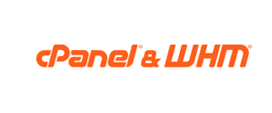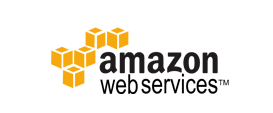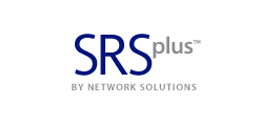-
Welcome to My Website
This is a text box. Write your own content here. This is an excellent place for you to add a paragraph.
Netway Support Center
เราพร้อมบริการคุณ ตลอด 24 ชั่วโมง
Payment & Invoices
Products Knowledge










Zendesk




Other Cloud Products
Technical Knowledge
Website/Install Application & FTP
Linux Technical Knowledge
Windows Technical Knowledge
Database
Blog list (8)
Mobile Malware Has Increased 500%
ทำอย่างไรให้รอดจากการมิจฉาชีพที่คอยแฮคข้อมูลทางมือถือThere has been an alarming surge in mobile malware attacks. Learn what you need to do right now to keep your devices safe. Cybersecurity researchers uncovered an alarming mobile statistic. During the first few months of 2022, mobile malware attacks surged by 500%.For years, mobile phones have become more powerful. They now do many of the same functions as a computer. Yet, people tend to secure their computers better than they do their smartphones. This is a behavior that needs to change. Over 60% of digital fraud now occurs through mobile devices. That makes them highly risky if proper safeguards aren’t followed.Use Mobile Anti-malwareYes, your mobile phone needs antivirus/anti-malware too! Malware can and does infect smartphones and tablets. Ensure that you have a reliable mobile anti-malware app installed.Don’t Download Apps from Unknown SourcesOnly download mobile apps from trusted sources. Do not download outside a main app store. Trusted app stores include places like:Apple App StoreGoogle PlayThe Microsoft StoreAmazon AppstoreDon’t Assume Email is SafeMany people prefer checking email on their phone rather than PC because it’s so handy. But they have a false sense of security about the safety of emails when viewed on a mobile device.It’s difficult to hover over a link without clicking when on a smartphone. If you see something questionable and want to check the link, open the email on your PC where you can do that.Beware of SMS Phishing (aka “Smishing”)In March of 2022, text spam outpaced robocalls. Unwanted text messages rose by 30%, ten percent higher than robocalls. Many of those spam texts are smishing. Be on the lookout for text messages that don’t quite make sense. For example, getting a shipping notification when you haven’t ordered anything.Remove Old Apps You No Longer UseGo through your device and remove old applications that you are no longer using. There is no reason to keep them around, potentially leaving your device at risk.Keep Your Device UpdatedSpeaking of updates, you also need to keep your device’s operating system updated. Are you using the current version of Android or iOS? Not installing updates can mean your phone has vulnerabilities. These vulnerabilities allow hackers to breach your data.Use a VPN When on Public Wi-FiPublic Wi-Fi is dangerous. Most people understand that, but many connect to it out of necessity. Reduce your risk by using a VPN app.Mobile Security Solutions to Prevent a DataBreach Don’t wait until your phone is infected with malware to secure it properly. It’s only a matter of time before you are the next victim.Contact Netway Communication, we serve you 24x7📲: 02 055 1095 📧: support@netway.co.th 👨💻Web chat: [[URL]]/ 💙Facebook Messenger: @netway.official https://www.facebook.com/netway.official 💚Add Line ID: @netway https://bit.ly/line-netway
8 Tech Checks to Make Before You Travel
8 เช็คลิสต์เรื่องไอทีที่ควรทำก่อนออกเดินทางแนะนำเช็คลิสต์ทางด้านไอทีแบบง่ายๆ ที่ควรตรวจสอบก่อนเดินทาง เพื่อคุณจะได้ไม่ต้องมาคอยปวดหัวระหว่างเดินทางไปเที่ยวหรือทำงานHave you ever left a charger behind at an airport?Been caught without a charge for your phone? Keep travel chaos to a minimum by reviewing our pre-travel tech checklist. แนะนำเช็คลิสต์ทางด้านไอทีแบบง่ายๆ ที่ควรตรวจสอบก่อนเดินทาง เพื่อคุณจะได้ไม่ต้องมาคอยปวดหัวระหว่างเดินทางไปเที่ยวหรือทำงาน เพื่อจะได้ไม่ต้องมาคอยปวดหัวระหว่างเดินทางไปเที่ยวหรือทำงาน ลองทำกันได้เลยค่ะ 1. ตรวจเช็คแอปต่างๆ 2. ตรวจเช็คสายชาร์จและอแดปเตอร์ 3. ตรวจเช็คว่าแบตเต็มไหม 4. เช็คแพคเกจมือถือของคุณ 5. เช็คหรือเพิ่ม VPN 6. ทำแบคอัพไว้แล้วหรือยัง 7. ตรวจสอบความปลอดภัยของอุปกรณ์ต่างๆ 8. ตรวจสอบที่ระบุมาทั้งหมดอีกครั้งNetway Communication ขอให้คุณเดินทางปลอดภัย และเที่ยวให้สนุกนะคะ หากมีปัญหาต้องการปรึกษาเรื่องความปลอดภัยในระบบคลาวด์ Netway Communication ยินดีให้คำปรึกษาแบบ 24x7 📲: 02 055 1095 📧: support@netway.co.th 👨💻Web chat: [[URL]]/ 💙Facebook Messenger: @netway.official https://www.facebook.com/netway.official 💚Add Line ID: @netway https://bit.ly/line-netway Our technology inevitably comes with us when we travel. Most of us won’t even travel to the end of the block without our smartphones. Travel smarter and more securely by doing several checks before you go. . Use our handy tech travel checklist. 1. Check Your Apps 2. Check Your Cords & Adapters 3. Check Your Power 4. Check Your Mobile Plan 5. Check or Add a VPN 6. Check Your Backup 7. Check Your Device Security 8. Check Your Double-Checks Give us a call! Netway Communication operate 24x7, we can help you on Cloud, and tech consult. 📲: 02 055 1095📧: support@netway.co.th👨💻Web chat: [[URL]]/💙Facebook Messenger: @netway.official https://www.facebook.com/netway.official💚Add Line ID: @netway https://bit.ly/line-netway Our technology inevitably comes with us when we travel. Most of us won’t even travel to the end of the block without our smartphones. When you go on a trip, not having your technology there when you need it can ruin your day.Travel smarter and more securely by doing several checks before you go. Use our handy tech travel checklist. It can save you from suffering from lost devices, missing chargers, or a data breach.1. Check Your Apps Have you ever sat at an airport gate wondering why it looked so empty? You then found out that your gate had changed, and you had no idea. You go rushing to the other end of the concourse, hoping you’re not too late. How did everyone else know about the gate change? They most likely had the app for the airline and received a notification. Before you leave for a trip, make sure to download any apps you may need. It’s better to download them when you’re at home on your own Wi-Fi. If you wait until you’re at the airport, reception may be an issue. Some of the apps you may want to grab or update before your trip are: Airline appTrain appHotel appTheme park appCamping ground appWeather appCity tourism app2. Check Your Cords & Adapters People leave behind countless chargers and adapters every day. They litter airports, restaurants, and train stations around the world. Make sure to bring a backup charger for your laptop, tablet, or phone. Otherwise, you may find yourself paying a premium for a new charger in a gift shop. Your device could also go black if you lose its charger and can’t quickly get a new one. 3. Check Your Power A great way to ensure you have the power you need is to buy a small charging battery. You can find these in most major retailers or online. They are small “blocks” that hold a charge and can power up a cell phone in a pinch. Having this extra backup also helps you avoid potential juice-jacking ports. These are fake or compromised public USB charging ports. Hackers use them to steal your data when you plug in.4. Check Your Mobile Plan If you’re traveling out of the country, you’ll want to check your mobile plan. If you don’t have the ability to call internationally, then you may not be able to text or call home. Carriers can add an international capability to your plan, but ask about pricing. It can get expensive if you’re on long calls or using mobile data. An alternative is to set up a VoIP app you can use with your office, friends, or family while you’re traveling. These enable both calls and SMS, but you do need an internet connection. 5. Check or Add a VPN Free Wi-Fi may be a welcome site when you’re on the road, but it can also be dangerous. You don’t know who else is using that Wi-Fi. A hacker hanging out on the connection can easily steal your data if you’re not protected. It’s better to use either your mobile carrier connection or a virtual private network (VPN) app. VPN plans are inexpensive and will keep your data encrypted, even if you’re on public Wi-Fi. 6. Check Your Backup Unfortunately, mishaps occur when traveling. You may leave your phone behind on a boat, have your luggage lost, or get your device stolen while in a crowded area. 10% of all laptop thefts happen in airports. Don’t lose all your data with the device! Back up your devices to the cloud or local storage before you travel. This ensures that you won’t lose the valuable information on your device. You also won’t need to think twice about enacting a remote “wipe my device” command if necessary. 7. Check Your Device Security Make your devices as secure as possible before you hit the road. When we’re traveling, our minds are occupied by other things. So, you may not think to check your antivirus or avoid suspicious phishing links. Protect your devices before you go using: Antivirus/anti-malware DNS filtering Screen lock with passcode Sharing features turned offVPN application Find-My-Device feature turned on 8. Check Your Double-Checks What do we mean by checking your double-checks? Use the buddy system as a backup. When the family is getting off a plane, each should check with the other that they have all their devices.If you’re traveling alone, have a friend or family member check up by text. Did you grab your charger? Is your VPN turned on? Those little reminders can go a long way toward avoiding digital travel nightmares. Improve the Security of Your Devices Now Don’t leave your devices unprotected. This could mean a breach of your banking app or personal data. Contact us for device security solutions to reduce your risk. Give us a call! Netway Communication operate 24x7, we can help you on Cloud, and tech consult. 📲: 02 055 1095 📧: support@netway.co.th 👨💻Web chat: [[URL]]/ 💙Facebook Messenger: @netway.official https://www.facebook.com/netway.official 💚Add Line ID: @netway https://bit.ly/line-netway
2023 Trends in Data Privacy That Could Impact Your Compliance
2023 Trends in Data Privacy That Could Impact Your Complianceสรุปเทรนด์ล่าสุดปี 2023เรื่องความปลอดภัยข้อมูลที่อาจส่งผลกับ Compliance องค์กรคุณคาดการณ์ว่าภายในปี 2024 ข้อมูลส่วนบุคคลของประชากรกว่า 75% บนโลกใบนี้จะต้องได้รับการปกป้องภายใต้นโยบายอย่างน้อย 1 นโยบาย และใน ทุกวันนี้กว่า 40% ของงานด้านเทคโนโลยีการจัดการนโยบายความเป็นส่วนตัว มีการนำ AI เข้ามาประยุกต์ใช้ เราขอเชิญคุณมาเรียนรู้ไปกับเรา เรื่องเทรนด์ล่าสุด ที่จะช่วยให้งาน compliance สำหรับองค์กรเดินหน้าไปอย่างปลอดภัยและสอดคล้องกับนโยบาย Approximately 40% of privacy compliance technology needs artificial intelligence to operate. Learn how data privacy is evolving and how it could impact your compliance needs. Data privacy has been a growing requirement ever since the internet age began. So much personal information is flying around through computer networks. Protecting it has become a mandate. Most companies must follow HIPAA, GDPR, or another industry or locality-based privacy rule. By the end of 2024, 75% of the world’s population will have their personal data protected. It will fall under one or more privacy regulations. You don’t need to be a large enterprise organization to have data privacy compliance at the top of your mind. It goes hand in hand with cybersecurity. Additionally, privacy requirements hit all sized companies. Between July 2020 and July 2021, GDPR violations rose by 113.5%. The number of associated fines also jumped, by 124.92%. Check out this link here, to find out about some of the biggest fines for GDPR data violations. It’s important to make data privacy a priority and factor it into all your data collection processes. When companies collect, send, or store personally identifiable information (PII) it needs protection. This means putting adequate safeguards in place. To stay on top of your privacy compliance obligations, you should also keep up with trends in this area. Next up, we’ve documented the biggest data privacy trends happening in 2023 that you should be aware of. What’s Happening in Data Privacy Compliance? AI Governance Approximately 40% of privacy compliance technology needs artificial intelligence (AI) to operate. AI has certainly made its way into many of the applications we use on a daily basis. When you’re typing in MS Word and text just springs up as a suggestion, that’s AI predicting what you’ll type next. When working on a photograph in Photoshop, you can now click a button to give a frowning face a smile. This is also the work of AI. So, it’s no surprise that AI is running many of the algorithms responsible for keeping data protected. But what happens when there is a problem with the AI? This is the question that AI governance is working to address. This is a new trend in data privacy because AI has never been so prevalent throughout the data journey as it is now. Whenever AI is used in the data protection area, organizations need to govern it properly. This helps ensure that automated processes aren’t accidentally exposing sensitive data. Consumer Privacy UX A trend that we’ve seen over the last several months is putting more privacy power into the consumer’s hands. Many privacy regulations require that apps and websites provide data transparency. They need to tell people what data they’re collecting, how they’re collecting it, and what they do with it. People also need an “out” to get their data back. These needs have led to consumer privacy UX becoming a “thing.” You can think of this as a centralized privacy portal. A place people can access privacy-related settings in various apps. This gives better visibility into how their data is being used. Increased Scrutiny of Remote Employee Monitoring The pandemic has forever changed the global workforce. Many organizations are now running completely remote offices. Or may be using a mix of remote and in-office staff. The dramatic increase in people working from home has led to data collection changes. Companies are ramping up their monitoring of those employees working off-site. But this type of monitoring opens a can of worms when it comes to data privacy. Organizations need to ensure that they aren’t encroaching on the rights of their staff. This is most pertinent when putting monitoring in place on employee devices. For example, approximately 49% of remote employees use their personal computers for work. Companies often put endpoint device monitoring in place for security reasons. They need to ensure they are not gathering or backing up any personal data. That would be data owned by the employee and not the company. Data Localization One of the concerns when the social app TikTok became popular relates to location. With the firm being a China-based company, people worried about the privacy of their data. The data was originally stored on servers governed by the Chinese government. A country with very different data privacy rules than the US and other countries. Data localization is going to become more prevalent. Increasingly organizations look at where their cloud data is being stored. Where a server resides governs the privacy rules and regulations that it may fall under. Thus, companies and governments are now asking a question of cloud providers. This is, “Where is my data stored?” Many want their data to be as close to home as possible. Privacy-Enhancing Computation (PEC) Data privacy by design is a fairly new term. Using privacy-enhancing computation is a way that AI is helping cybersecurity. By using PEC as a built-in component of software and apps, developers provide value to clients. They address privacy concerns by making data protection more automated. Look for PEC components in data analytics when shopping for business tools. When is the Last Time You Had a Compliance Check? Need help with your cyber security? Give us a call! Netway Communication operate 24x7, we can help with a compliance checkup. 📲: 02 055 1095 📧: support@netway.co.th 👨💻Web chat: [[URL]]/ 💙Facebook Messenger: @netway.official https://www.facebook.com/netway.official 💚Add Line ID: @netway https://bit.ly/line-netway
วิธีการ Allow หรือ Block Email และ Domain บน Exchange Admin Center (Spam Policy)-2
บางครั้งผู้ดูแลระบบจำเป็นจะต้อง Allow หรือ Block ผู้ติดต่อทั้งในรูปแบบ Email Address หรือ Domain ซึ่งบนระบบ Microsoft 365 สามารถเข้าไปตั้งค่าได้ที่ Exchange Admin Center ผ่าน Admin Center สามารถดูวิธีการได้ตามด้านล่างนี้ 1. เข้าสู่หน้าจัดการผู้ดูแลระบบ (Admin Center) ได้ที่ https://portal.office.com/adminportal/home#/homepage หลังจากที่เมนูด้านซ้ายไปที่ Admin centers > Exchange 2.เมื่อเข้าสู่หน้า Exchange admin center ไปที่เมนู Other features > Spam filter 3. ในหน้า Anti-spam policies หากมีเพียง Default policy แนะนำให้สร้าง Policy ใหม่ เพื่อจะได้คืนค่าเดิมได้ หากมีอะไรผิดพลาด และเมื่อสร้าง Policy ใหม่ Policy ที่ถูกสร้างขึ้นจะมีผลก่อน Default Policy เสมอโดยเลือก Create > Inbound และใส่รายละเอียดให้ครบถ้วนใส่ชื่อ Policyใส่เงื่อนไขที่ให้ Policy มีผล หากต้องการสร้างสำหรับทั้งองค์กร ให้เลือกหัวข้อ Domainเลือกเงื่อนไขที่ต้องการให้มีผล เช่นIncrease spam score (ตัวเลือกที่เข้าข่าย จะมีผลต่อการเพิ่มคะแนนการเป็น Spam มากขึ้น)Mark as spam (ตัวเลือกที่เมื่อเข้าข่าย จะส่งผลให้ข้อความฉบับนั้นๆ เป็น Spam ทันที)บางเมนูสามารถเลือกเป็น Test mode ได้ โดยเลือกให้แจ้งเตือน แต่ยังไม่ส่งผล โดยจะแจ้งเตือนบุคคลที่ต้องการActionเลือกได้ว่า จะส่งผลอย่างไรต่อข้อความนั้นๆ หากโดน Mark as spam แล้ว เช่น 1. หากข้อความนั้นๆ เข้าข่ายว่าเป็น Spam จะทำอย่างไร (ปกติเข้า Junk ของ User)2. หากข้อความนั้นๆ เข้าข่ายว่าเป็น High confidence spam จะทำอย่างไร (ปกติจะเข้า Junk ของ User)3. หากเป็น Phishing (Email หลอกลวง) จะทำอย่างไร (ปกติจะถูกส่งเข้า Quarantine) และเมื่อเลื่อนลงมาด้านล่าง จะมีจำนวนวันที่ให้ข้อความอยู่ใน Quarantine (ค่าเดิม 15 วัน ตั้งได้สูงสุด 30 วัน)Allow and block listถึงเมนูที่ต้องการ Allow หรือ Block ผู้ติดต่อสามารถตั้งค่าได้ที่เมนูนี้Sender allow list : Email address ที่ต้องการ Allow (ยอมรับ) ใช้ในกรณีที่เข้า Spam โดยไม่ต้องการDomain allow list : Domain ที่ต้องการ Allow (ยอมรับ) ใช้ในกรณีที่เข้า Spam โดยไม่ต้องการSender block list : Email address ที่ต้องการ Block ซึ่งส่งผลให้ถูกมองว่าเป็น SpamDomain block list : Domain ของ Email ที่ต้องการ Block ซึ่งส่งผลผู้ติดต่อทั้งหมดที่ใช้ Domain ดังกล่าวถูกมองว่าเป็น Spam จากนั้นกด Next และตรวจสอบรายละเอียดการตั้งค่าต่างๆ และกด Createในกรณีที่มีการสร้าง Policy อยู่แล้ว และต้องการเพิ่มหรือลบ Allow หรือ Block ผู้ติดต่อ ให้เลือก Policy ที่สร้างไว้ จากนั้นเลือก Edit allowed and blocked senders and domains ได้เลย ดังภาพ เมื่อตั้งค่าทั้งหมดแล้ว ให้กด Save และสังเกตุการใช้งานอีกครั้งหนึ่ง ว่า Rule ทำงานตามเงื่อนไขที่กำหนดหรือไม่ ผู้ใช้งานสามารถกำหนดเงื่อนไขได้หลากหลายตามความต้องการ ซึ่งไม่จำเป็นต้องทำในรูปแบบตามตัวอย่างเสมอไป หากมีข้อสงสัยเพิ่มเติม สามารถสอบถามได้ที่ support@netway.co.th ครับรายละเอียดเพิ่มเติมhttps://learn.microsoft.com/en-us/microsoft-365/security/office-365-security/anti-spam-policies-configure?view=o365-worldwide
Year in Search 2022: เจาะเทรนด์ผู้บริโภค คู่มือที่นักการตลาดควรรู้ (Updated Feb 2023)
Year in Search: เจาะเทรนด์ผู้บริโภค คู่มือที่นักการตลาดควรรู้ หลังจากที่พวกเราผ่านช่วงเวลาผันผวนใน 3 ปีที่ผ่านมา ผู้คนเริ่มแสวงหาการใช้ชีวิตตามวิถีของตนเองอย่างแท้จริง ไม่ว่าจะเป็นการมองหารูปแบบการใช้ชีวิต การทำงาน และความเป็นตัวตน ซึ่งส่งผลให้พฤติกรรมของพวกเขาเปลี่ยนไป เราสังเกตเห็นรูปแบบการเปลี่ยนแปลงนี้จากการวิเคราะห์ข้อมูลการค้นหาบน Google นับพันล้านครั้ง และได้ประมวลผลมาเป็นเทรนด์ต่างๆ ที่สะท้อนถึงความสำคัญ ความสนใจ และพฤติกรรมที่เปลี่ยนแปลงไปของผู้บริโภคไทยรายงาน Year in Search ฉบับนี้ได้รวบรวมผลการวิเคราะห์เทรนด์ดังกล่าว เพื่อช่วยให้นักการตลาดนำไปใช้วางแผนการทำการตลาด และต่อยอดธุรกิจในปีข้างหน้าดาวน์โหลดรายงานฉบับภาษาไทยและภาษาอังกฤษได้ที่ด้านล่างDownload Year in Search Thailand reports in Thai and English belowเราดีใจที่คุณยังนึกถึงเรา 👧🧔 และพร้อมดูแลคุณ 24 ชม. ผ่านทุกช่องทางที่คุณสะดวก 🖥 Web Chat: [[URL]] 📞 Tel: 02-055-1095 💙 Facebook Messenger: @netway.official 💚 Line ID: @netway หรือ https://bit.ly/line-netway📧 Email: support@netway.co.th
-
Domain
-
Hosting
-
Cloud & Managed
-
SSL
-
Email
- เรียนรู้เพิ่มเติม
- Microsoft 365 รุ่นต่างๆ
- Microsoft 365 สำหรับธุรกิจ
- Microsoft 365 สำหรับใช้งานที่บ้าน
- ทดลองฟรี
- G Suite
- เทคนิคลดต้นทุนอีเมล Microsoft 365 มากกว่า 28%
- เทคนิคลดต้นทุนอีเมล G Suite มากกว่า 19%
- Zimbra-Based Email
- Traditional Email by cPanel
- Physical to Cloud Migration
- Exchange Server to Microsoft 365 Migration
- G Suite to Microsoft 365 Migration
- Microsoft 365 to G Suite Migration
- Cloud to Cloud Migration
-
Microsoft
-
Google
-
Marketing
-
Others
-
Blog
-
Microsoft Teams
-
microsoft-365-business-premium
-
test-slide
-
Order
-
Promo
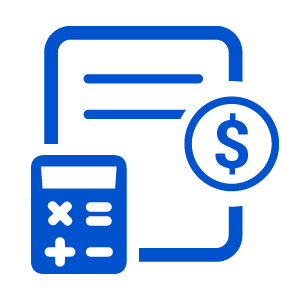

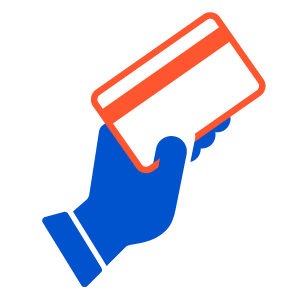
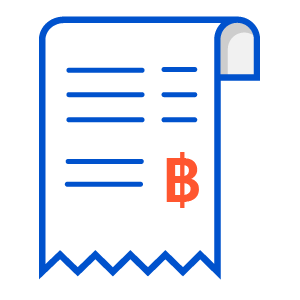




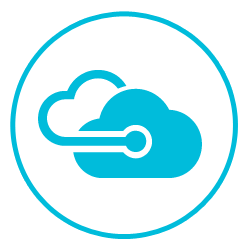
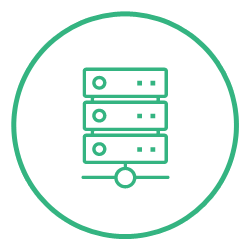
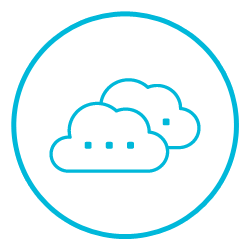











.png)



.png)




